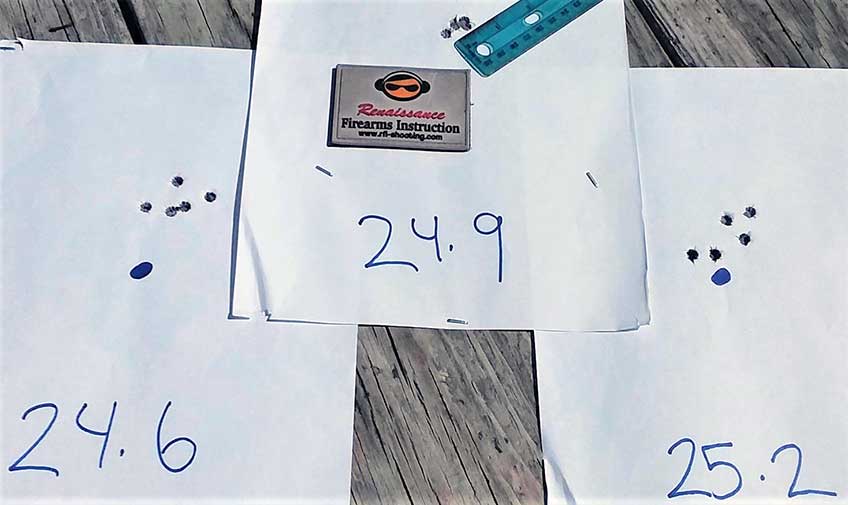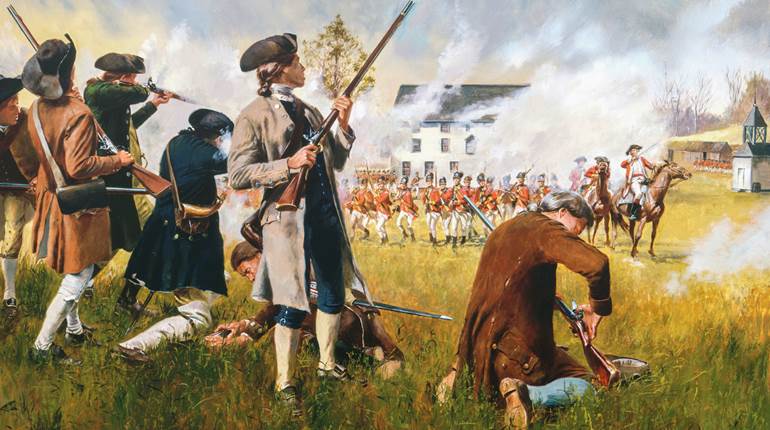
It is in our nature to seek shortcuts in life. If we can shave a few miles off of a trip, circumnavigate a line at the store or even just save a few mouse clicks by using hotkeys we are going to gravitate to that path of least resistance, just as long as there aren’t any serious consequences. Well, what about handloading?
Yes, handloading is indeed an arduous task. Sometimes taking more than two trips to the range to settle on the best bullet and powder combination for a given rifle. This process traditionally requires building cartridges with incrementally increasing powder charges; usually five to ten of each. At the ripe old age of 37 most would call me an old-timer because I still do things this way while many opt to use the ladder test method.
For those who aren't familiar, a latter test involves firing a group of rounds, all with different loads that range from starting to max load for a given cartridge. The idea is to take these rounds (usually around 10) and fire each one at the same aiming point. The goal is to record which shots are located at the same location, thereby indicating which powder-charge measures to focus on.
In theory, ladder testing sounds really great, because you can potentially reduce 50 – 100 rounds of research down to around 10. Instead of loading five or 10 of each powder charge, you only load one round of each and fire them all at the same target. Here, instead of looking to see which batch groups the tightest, you are looking to see which individual rounds impact the closest to one another. While the theory behind it is sound, I have found enough pitfalls with the system to steer me clear of it and here are my top five.
No. 1: Shooter Error
While we all want to believe that we don’t flinch anymore and that there is no possible way that we pull the rifle left or right while we depress the trigger, this is certainly not the case. We are human after all and therefore susceptible to less than perfect performance at times.
If the fate of a rifle’s accuracy depends on repeated perfect human performance for 10 or more, you might as well see how that thing can drive a golf ball. Sure, many of us are capable of tight groups on a good day, but the margin of error is just so small. Should I throw one or two rounds in the same way, I might walk away thinking that’s the node and load according to that information.

No. 2: Component Issues
I know what you’re thinking. Today’s bullets, primers and powders are made by highly repeatable machines. Well, guess what supervises and maintains those machines? Humans.
Perhaps that last bullet before addressing a cup realignment wound up in your box of ammo. What if the entire lot had an issue? A small variance in components could wreak havoc on an entire ladder test. However, if you fired five or 10 rounds of that loading, you would see something is wrong.
No. 3: Tiny Nodes
More than once, I’ve found a round that needed to be within two-tenths of a gr. to shoot right. 6.5 mm Grendel seems to be the epitome of this phenomenon. Essentially 24.9-grs. of a given powder yielded half-MOA results in this one rifle but 0.3-grs. either direction opened up the accuracy to nearly two MOA.
With such a narrow line to walk, I doubt any two charge weights would have impacted near each other. If I went the ladder-test route, I would have given up on this powder and bullet combination and would never know how well this gun could shoot. Funny thing with 6.5 mm Grendel is that there aren’t many combinations of components that work. A ladder test may have even led to me abandoning the rifle!

No. 4: The Rifle Isn’t Up to The Task
Ladder testing assumes that the firearm and optic are both capable of at least MOA accuracy with the right load. Well, what if it isn’t? Let’s face it, some guns just don’t shoot that well. My M1 Garand comes to mind.
If I were to load .30-06 Sprg. from minimum to max in 0.3-gr. increments we are looking at more than 20 different rounds to test! Am I about to “waste” two boxes of bullets chasing my best accuracy? You’re damn right I am!
Field-grade Garands are about two-MOA accurate. There is no possible way that a shotgun pattern of a ladder test from one of these is going to produce any sort of readable results, especially when the test is going to be conducted with iron sights.
No. 5: The Wind
Looking for that perfectly still day for load testing? Not if Mother Nature has anything to do with it! In a way, this issue applies to rifles that are the polar opposite of those referenced to in example number four. If your rifle is a solid tack driver then a slight gust of wind might blow your shot a half-minute left or right, perhaps out of the true node and into the false one.
At my home range, we have a narrow band of wind that blows across the last 25-yds. to the target board, yet can’t be felt from the firing line. The wind is very unpredictable at times, and that's the perfect recipe for a messed-up ladder test.
While the five reasons above lead me to some deep thinking, it was a simple fact that closed the book on the time-saving ladder test method to me. That it doesn’t actually save time!
A range session takes me about two hours of preparation before I ever fire a shot. My range is about 45 minutes away, with about 15 minutes to set up and the same to break down. Well, ladder testing isn’t about finding your best load; it’s only a method of narrowing down possible winners.
On a given day, I can test-fire 50 rounds in around an hour, usually without the need for a second trip to find my optimal powder charge. If I ladder test, then I have to invest two hours of time just to sidestep shooting maybe 50 rounds of load development. In the end, I have to invest more than four hours worth of time to get what I could do “the hard way” in just three. Sure I’ll save around $20 in components, but gasoline and range fees quickly eclipse these savings.
So, if you are trying to figure out if a set of components will shoot well in your rifle it is usually just easiest to see what others are using in the same or similar platform. Consult separate reloading manuals or connect with other shooters who are developing loads.
At the very least, you'll be able to gain an idea as to what load is best for your gun from the comfort of home. Otherwise, you'll just have to shoot. Isn't that what handloading is about anyway?






































